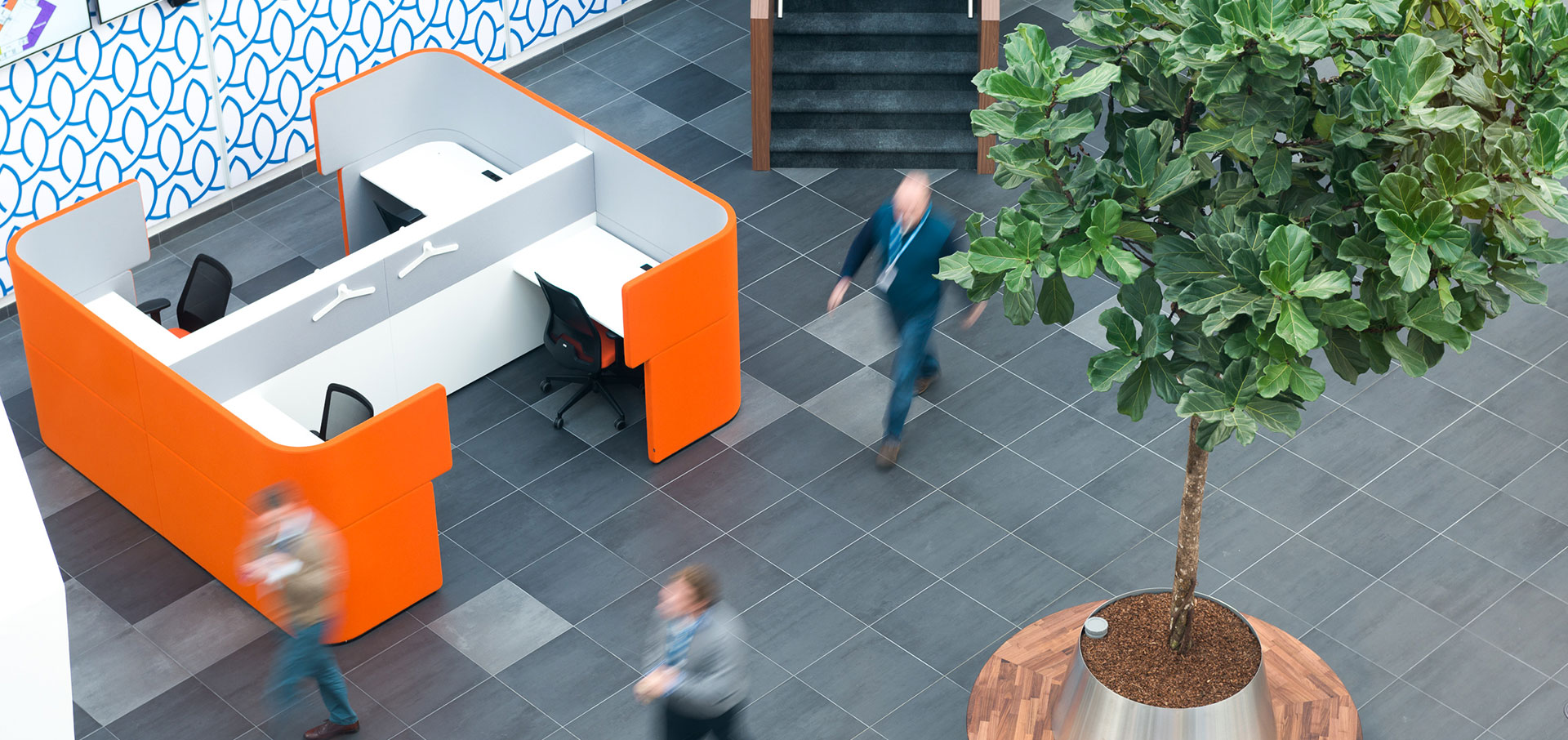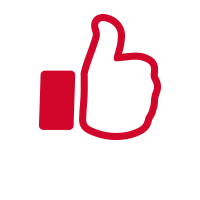How the workplace of tomorrow will blur boundaries and make employees happier
The fact that digitalisation is also changing workplaces should not really come as a surprise. Even traditional sectors are looking to modern companies like Google and drawing inspiration from their "fun" workspaces. Indeed, concepts like this are crucial for companies looking to recruit young professionals. After all, millenials clearly no longer wish to have work and relaxation so rigidly defined or enforced by clocking in and out. Employers that wish to remain marketable in future must give consideration to how they integrate the concept of a work-life balance at the workplace.
Tradition meets digitalisation - Workplaces are changing
Zoned office "cages" with as much workspace as possible and little in the way of personality that focus on work as the central office design factor are simply no longer fit for purpose - even at companies where the notion of a work-life balance is little more than a minor sub-clause in the job description.
High staff sickness and employee turnover rates pose a real threat to companies, as knowledge and data are today the real currency in the business world. When employees leave, so does their expertise.
Employee health is therefore becoming increasingly important, even in sectors beyond the world of technology and the online world. Instead of taking the floor plan of a company and simply allocating office spaces, emphasis is today therefore placed on creating work zones. The key here is still the permanent workplace. Yet even this concept is today significantly more flexible, providing high-grade, adjustable and ergonomic office chairs, desks that allow staff to stand while working, as well as more open space allocation concepts for communication with colleagues.

Alongside these concepts, employers also make zones available for informal chats - with lounges replacing classic break rooms and mobile devices freeing staff from their desks, allowing them to work increasingly often from a relaxed position on the sofa, for example.
Overall, we can say that the formerly rather strict rules in office environments are giving way to a more relaxed atmosphere. While anyone going to the bathroom may previously may have felt like they were being timed, employees can today move around far more freely at the workplace. This is largely due to the increasing realisation that getting the work done properly is the most important thing. When and how this is done is essentially irrelevant.
It should therefore come as little surprise that home offices and flexitime models are no longer offered only in project-based sectors. Practice has shown that when employees are "let off the leash", they are far more willing to go further and do more.
The future workplace is an organism
However, setting up open rooms, incorporating more informal work zones and using office furniture that promotes health is only the start. Anyone keen to know what the workplace of the future will look like need only take a look at the start-up or co-working scene.
Biophilic design - Including nature as part of the workplace
Anyone stuck behind a desk all day is unlikely to see much in the way of sun or nature. Yet these two aspects represent a key requirement for employee well-being. Biophilic design integrates them into the office design process - going far beyond the familiar unloved plant on the windowsill.
With living, growing walls employing hydroponics, huge skylights for natural light and indoor gardens for lunch breaks - the future workplace will bring nature into the working environment. This will also significantly increase the sense of well-being among employees, as underlined by the report entitled "The Global Impact of Biophilic Design in the Workplace".
Cooperation becomes sharing and co-working on a broad basis
Does a company really need its own office? This could soon be a thing of the past. Office sharing is a similar concept to co-working, but involves multiple companies working together under one roof - developing ideas that otherwise would have been impossible.
Competitive pressure is easy to avoid here, as although the companies share the same values, they serve different target groups with different products. This results in greater exchange and more information, while providing space for flashes of genius in informal meetings.

Greater scope for occupational health
From in-house massage therapists, health incentives for employees such as gym memberships to quiet rooms for power naps, it is clear that the wellness factor is becoming increasingly important at forward-looking companies. Services that are otherwise typically used privately then become part of employee remuneration. The employer also ensures that time is set aside, so that staff can actually take advantage of these offers.
Everyone can work how they wish - and remain flexible
Colleague A finds he works best at a standing desk. Colleague B likes using the seating ball at various locations in the office. Colleague C prefers to get on with her work at a classic desk:
The office of the future offers all types of office set-up. The only rule here seems to be that uniformity is out. At the same time, permanent workplaces are disappearing, giving way to flexible office solutions that allow a room to be designed in keeping with a specific project and employee preferences, ideally at the push of a button with office furniture and seating on rollers.
More personality
The times of featureless offices with dead atmospheres are over. Instead, the focus is shifting towards the personality of a company and its employees, with everyone entitled to get involved in the design process. The challenge here lies in harmonising "charming chaos" with corporate design. The furnishing and interior design wishes of employees are also taken seriously here without compromising the look and feel of the company.
Get the family involved
When conservative companies such as Goldman Sachs set up a dedicated crèche at their headquarters, even the most resistant of employers must surely realise that any notion of separating work and family is a thing of the past. This does not even require intensive investment, instead focusing on a flexible workplace design, a children's corner in the office for days when the daycare facilities are closed and for company events expressly aimed at the entire family.
Of course, nobody can actually predict the future with any degree of certainty. But one thing is clear: The workplace of the future will certainly be aligned more flexibly to the requirements of employees. If not, these same employees will simply leave in order to find a different employer that can offer them what they are looking for.
 735
735OverviewPDF download



